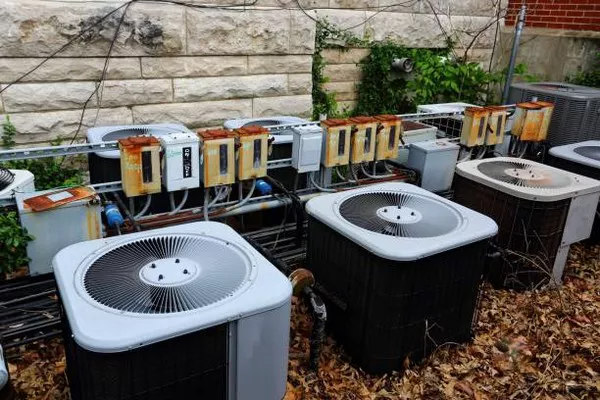In an era where electricity is the lifeblood of our daily lives, power outages can be more than an inconvenience; they can disrupt our routines and compromise our safety. This is where home generators step in as silent guardians, providing a reliable source of electricity when the grid fails. Understanding how home generators work is crucial for homeowners seeking a reliable backup power solution.
Types of Home Generators:
Before delving into the mechanics of how home generators work, it’s essential to recognize the different types available in the market. Broadly speaking, there are two main categories: portable generators and standby generators.
Portable Generators:
Portable generators are versatile units that can be moved around to provide power where it’s needed most. These generators are typically fueled by gasoline or propane and are ideal for powering essential appliances during temporary outages. They are not designed for continuous use but offer a convenient solution for short-term power needs, such as during camping trips or minor home disruptions.
Standby Generators:
Standby generators, on the other hand, are permanent fixtures installed on a property to provide uninterrupted power during prolonged outages. They are often fueled by natural gas or propane and are connected directly to a home’s electrical system. Standby generators can automatically detect power outages and start working within seconds, making them a seamless and reliable solution for homeowners seeking uninterrupted power supply.
Components of a Home Generator:
To understand how a house generator works, it’s essential to familiarize oneself with its key components:
Engine:
At the heart of every generator is its engine, responsible for converting fuel into mechanical energy. Most home generators feature four-stroke internal combustion engines, similar to those found in cars. These engines are designed to run efficiently and provide the necessary power to the generator.
Alternator (Generator Head):
The alternator, also known as the generator head, is responsible for converting the mechanical energy generated by the engine into electrical energy. It consists of a coil of wire and a magnet, and as the engine turns the alternator, it induces an electrical current in the coil through electromagnetic induction.
Voltage Regulator:
The voltage regulator plays a crucial role in maintaining a steady and safe electrical output. It monitors the voltage produced by the generator and adjusts it to ensure it stays within a specific range. This helps protect connected appliances and electronic devices from potential damage caused by voltage fluctuations.
Fuel System:
The fuel system is responsible for supplying the engine with the necessary fuel (gasoline, propane, or natural gas). It includes components such as fuel tanks, pumps, and carburetors (for gasoline-powered generators). Standby generators, connected to a permanent fuel source like natural gas, eliminate the need for manual refueling.
Control Panel:
The control panel is the user interface that allows homeowners to start, stop, and monitor the generator. It often includes indicators for voltage, frequency, and fuel levels. In the case of standby generators, the control panel may also have an automatic transfer switch (ATS) that seamlessly switches between grid power and generator power during an outage.
Working Mechanism:
The operation of a home generator involves a series of steps that ensure a smooth and reliable power supply:
Start-Up:
When a power outage occurs, standby generators equipped with an ATS automatically detect the interruption and initiate the start-up process. Portable generators require manual activation, with users starting the engine by pulling a recoil starter cord or using an electric starter.
Fuel Combustion:
Once the engine is running, it begins to combust fuel within its cylinders. In the case of portable generators, users need to ensure a steady fuel supply by periodically refueling the unit. Standby generators, connected to a continuous fuel source, can operate for extended periods without user intervention.
Mechanical Energy Generation:
As the engine combusts fuel, it generates mechanical energy, which is then transferred to the alternator (generator head). The alternator, with its coil and magnet arrangement, converts this mechanical energy into electrical energy through electromagnetic induction.
Voltage Regulation:
The voltage regulator constantly monitors the electrical output to maintain a stable voltage. This is crucial for protecting connected appliances and electronic devices from potential damage caused by voltage spikes or dips.
Power Distribution:
The generated electrical energy is then distributed to the home’s electrical system through the generator’s outlets (for portable generators) or through a transfer switch (for standby generators). The transfer switch ensures a seamless transition between grid power and generator power, preventing backfeeding and ensuring the safety of utility workers.
Shutdown:
Once the grid power is restored, standby generators with an ATS will automatically switch back to the utility power source. Portable generators require manual shutdown, where users turn off the engine and disconnect the generator from their home’s electrical system.
See Also How Long Can A Generator Run On Propane
Conclusion:
Home generators provide a lifeline during power outages, offering peace of mind and ensuring that essential appliances and systems remain operational. Understanding the intricate workings of these generators—from the engine and alternator to the voltage regulator and control panel—empowers homeowners to make informed decisions when choosing a backup power solution. As technology continues to advance, the reliability and efficiency of home generators will likely improve, further solidifying their role as indispensable guardians against the uncertainties of power disruptions.

